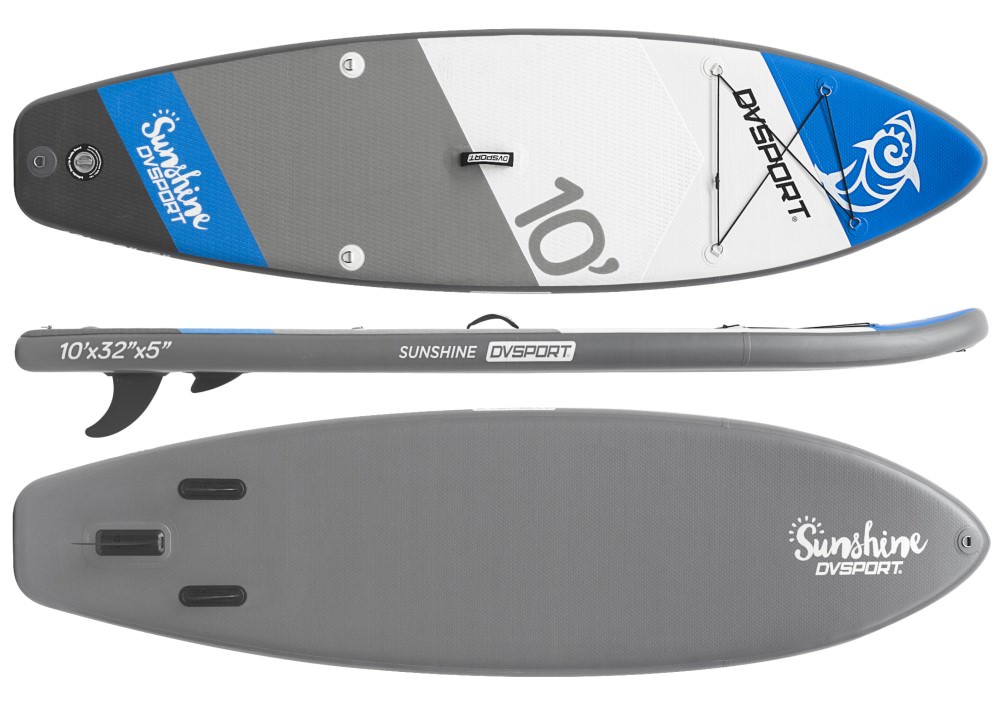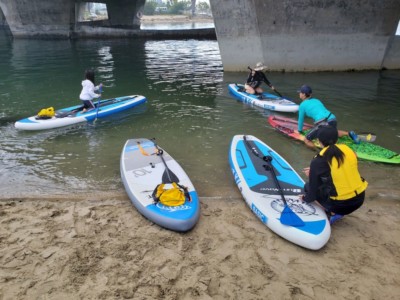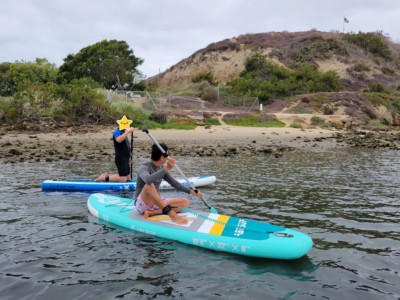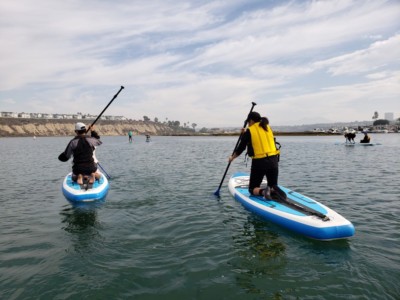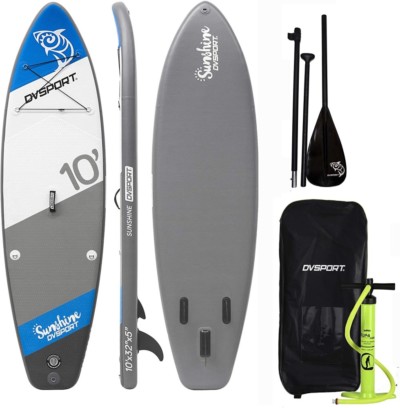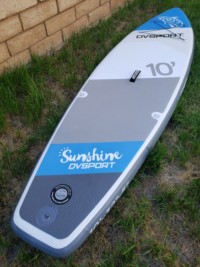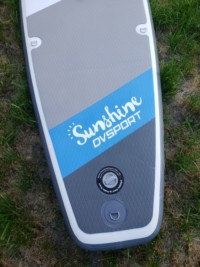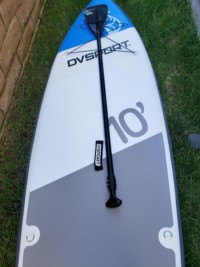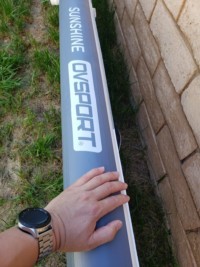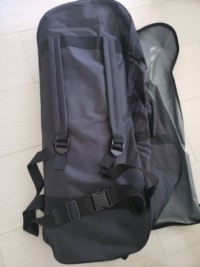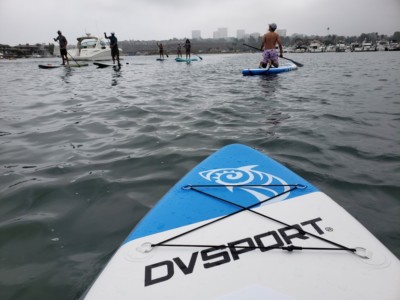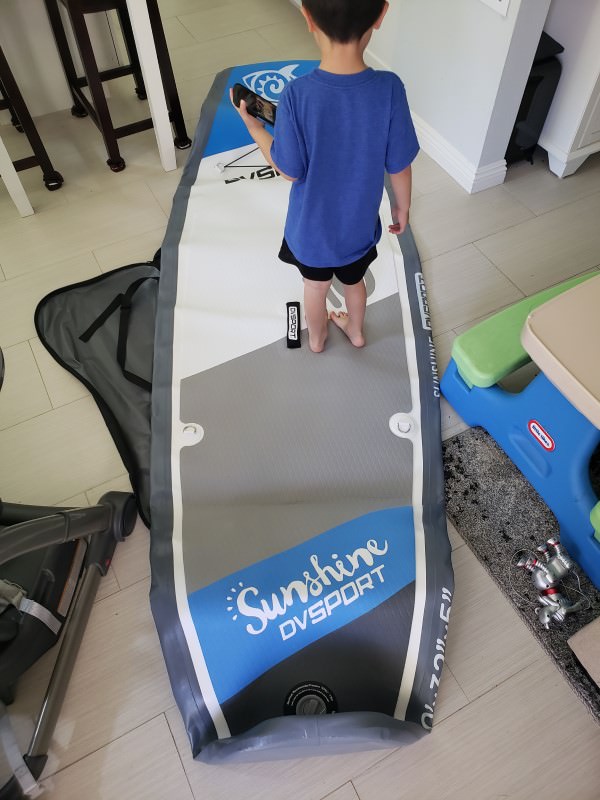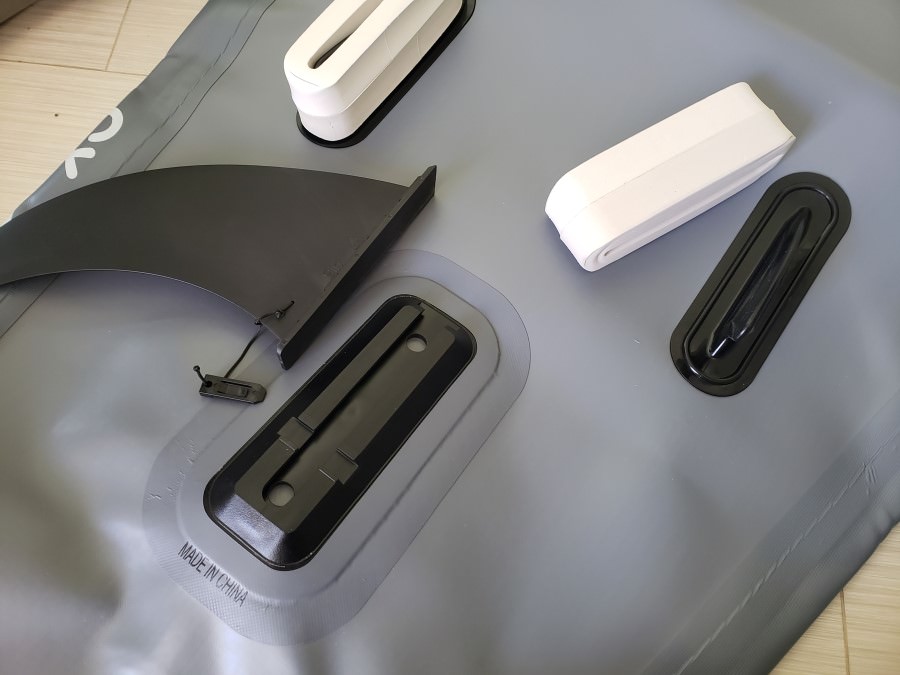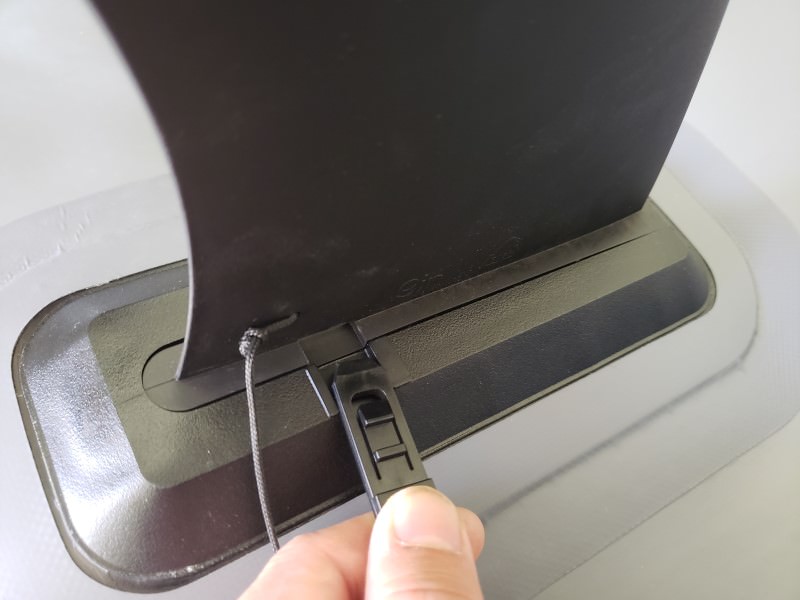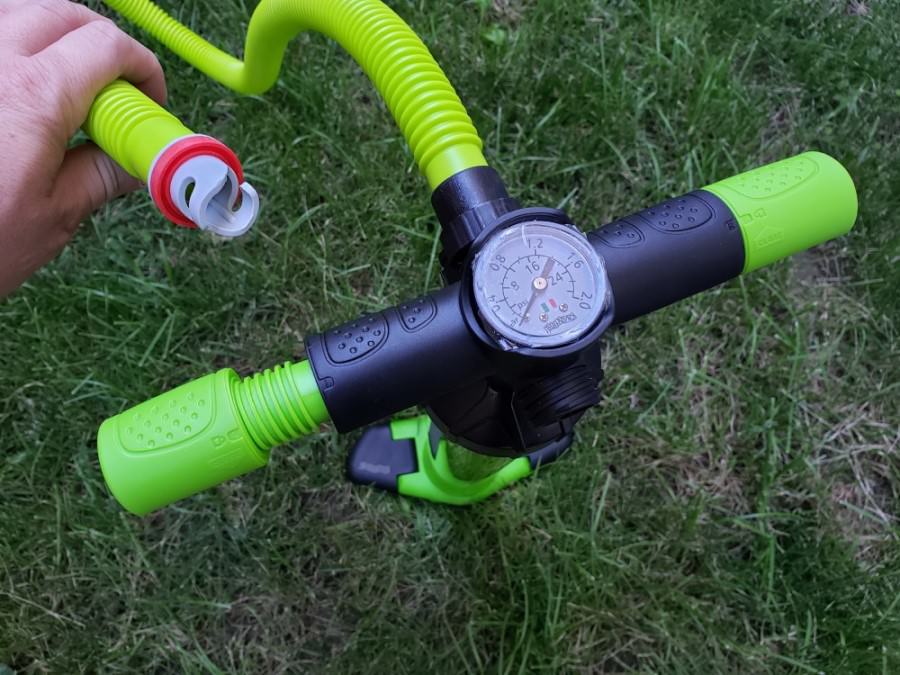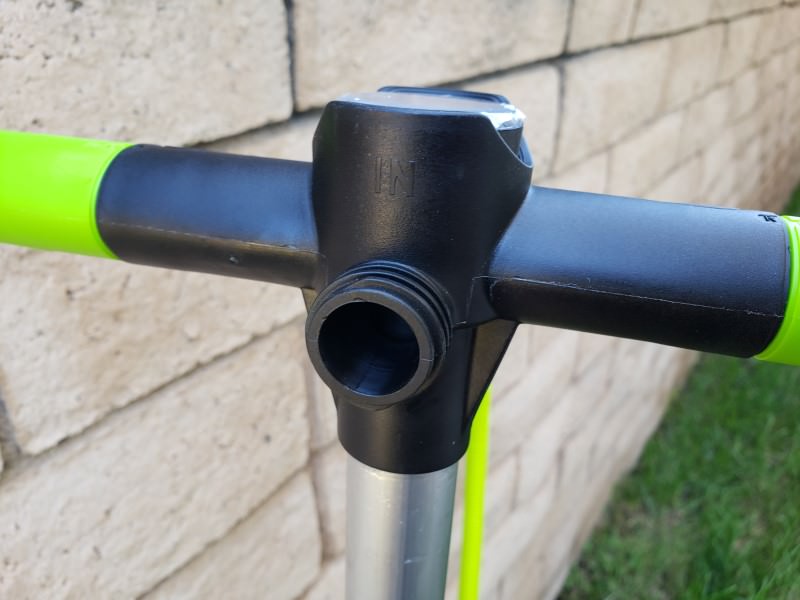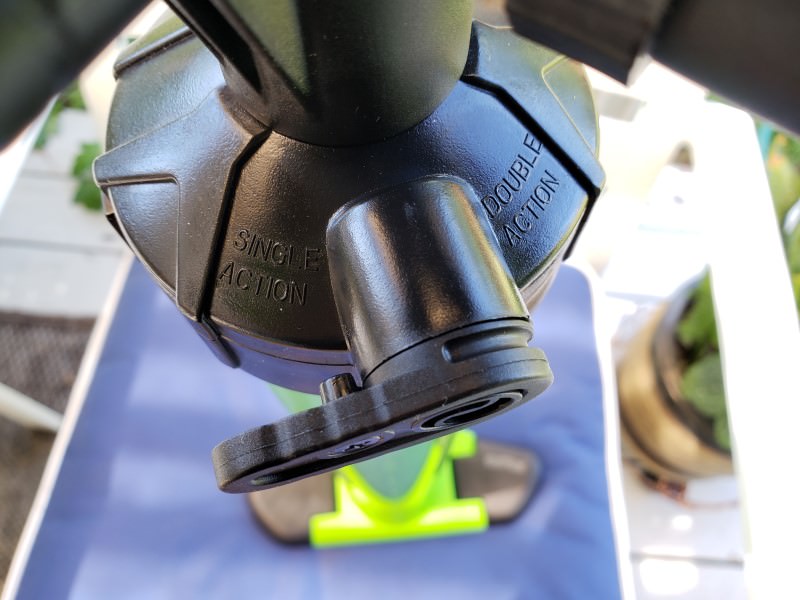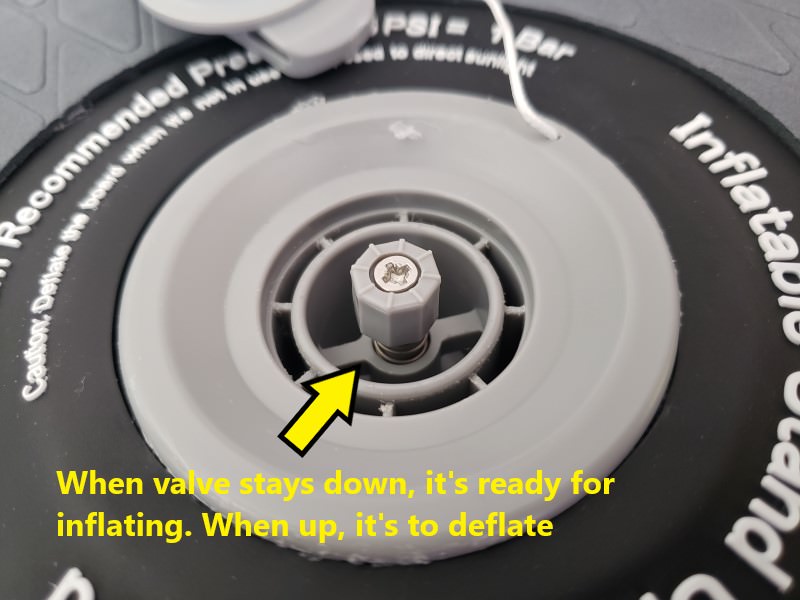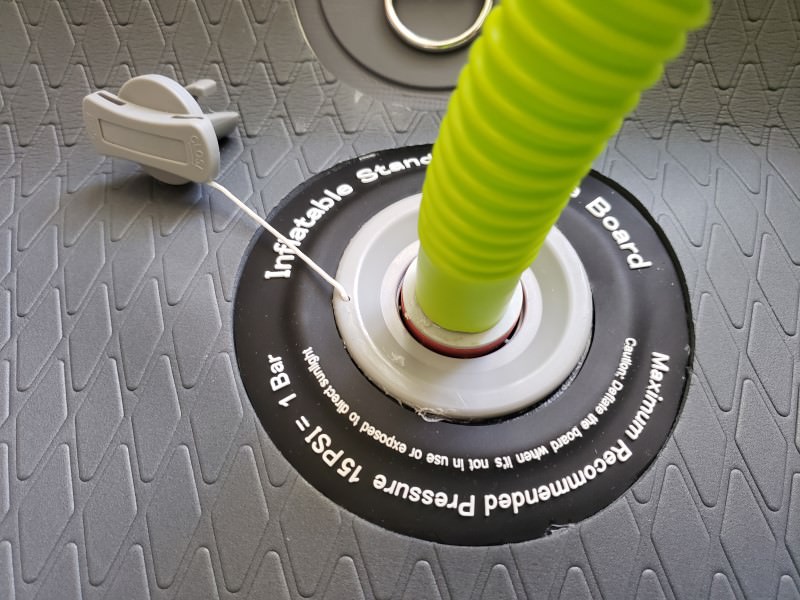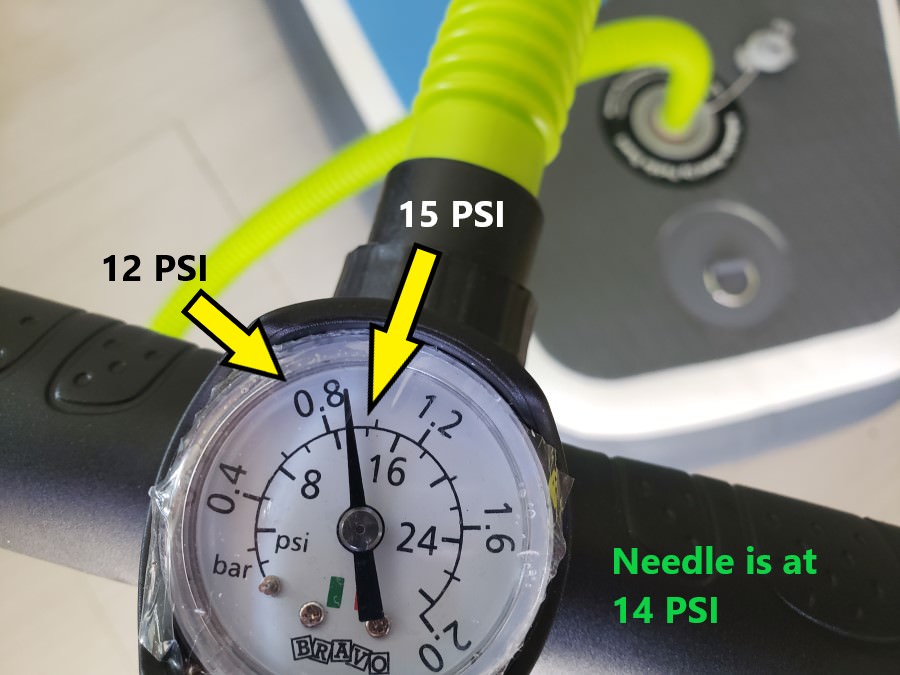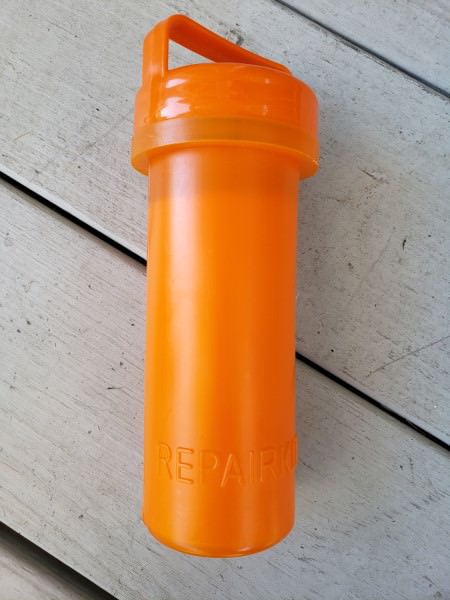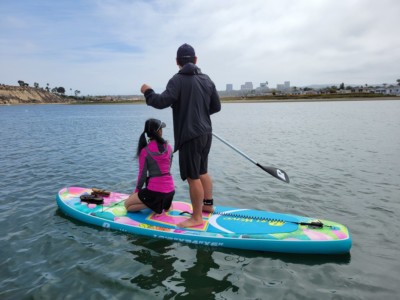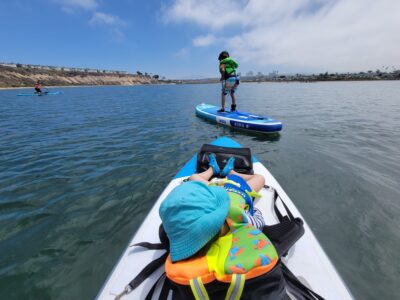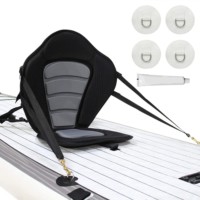DvSport Sunshine Inflatable Stand Up Paddle Board iSUP (WH305-10)
Contents
An Intermediate Paddle Board
With summer already here, it was time to go play, relax, and soak up some sun while avoiding the crowds on the beaches. My best friend and I had always wanted to purchase a standup paddleboard (SUP) ever since we got hooked with one years ago, riding them in the harbor along the Pacific Ocean and some remote lakes in the Sierra wilderness.
The typical rental fee for a SUP in our area runs for $30/person for two hours. So, doing the math for this more advanced, inflatable SUP (iSUP) at $400 (DVSport Sunshine WH305-10), that would equate to 13 rentals for up to 26 hours of use. It made sense for us to look into purchasing one instead, the same way we had saved so much cash after buying a snowboard and avoiding those pesky rental fees and lines.
There are different types of inflatable SUP (iSUP) constructions, each affecting the durability, stability, and cost. Knowing which one to choose can be quite confusing. My friend and I had always thought that even though iSUPs were less expensive than hard SUPs, they would also be less durable because they were inflatables — like how a wooden baseball bat would be stronger than a balloon lightsaber. As it turned out, we were wrong.
Read about iSUP vs SUP (and more) in our guide, Stand Up Paddle Boarding Basics & Tips: How to choose, prepare, maintain, and paddle Inflatable Boards (iSUP)
The DVSport Sunshine iSUP uses a laminated, dual layer construction technique. Although I had ridden on hard/epoxy and inflatable paddle boards before, this review would be for one I would own for the first time.
What’s Good? What’s Bad?
Pros
- Relatively lightweight: 24.5 lbs, dual-layered
- Runwave Kohala: 25 lbs, single-layered / Abysup: 21.5 lbs, dual-layered
- Light enough to be carried to remote wilderness locations
- Less expensive than hard boards
- Fast to deploy/inflate
- First time, it took me 20 minutes reading instructions and looking for the parts
- Second time took roughly 11 minutes to get paddle-ready
- Consider using an electric pump for faster deployment. See TIPS section for more
- Compact and portable
- Folds away easily to the size of a sleeping bag
- Simply deflate, remove specific parts, protect the fins, and roll away
- Takes up less space than hard boards
- Can fit in a smaller car, is easier to carry around, and can be checked in on an airplane (and helps save on rental fees)
- Folds away easily to the size of a sleeping bag
Inflatable SUPs are more durable than hard boards as they won’t scratch or ding when dropped, making them a bit more suitable for rocky, wild adventures
- More durable than hard boards as they won’t scratch or ding when dropped, making them a bit more suitable for rocky, wild adventures
- This did not initially make sense: why would an INFLATABLE be more durable than a HARD board?
- Hard boards are more prone to cracking, scratches, and appearance of holes that require immediate fixing. Who knew?
- Construction consists of 90 stitches/sq in, according to the manufacturer
- This did not initially make sense: why would an INFLATABLE be more durable than a HARD board?
- Causes less injuries than hard boards
- Good board for beginners and all-around leisure paddling
- Inflatables cause less fatigue
- Great stability aided by its 5″ inflated thickness, 32″ width, 10′ length, and 240L volume (the irregular shape accounts for about 24% off the dimensions)
- Extra volume adds more stability and weight support over hard boards
- Supports up to 264 lbs, according to the manufacturer, and can easily carry an adult and a child
- Does not flex as much as some iSUPs I had previously rented
- Its dimensions make the board perfect for recreational paddling
- Extra volume adds more stability and weight support over hard boards
- Can be used for surfing on small waves
- Based on my research, inflatables can last 10 years or more, depending on maintenance, storage environment, and other factors
- Multiple accessories included
- Carry bag/Backpack – Big enough to likely fit 2 iSUPs
- Levante Pump with max pressure of 29 PSI (2 Bars)
- Can pump air in or out. Connect the hose to the opening marked “OUT” to inflate
- Single and Double Action pumping. I use Double to quickly inflate to about 8 PSI, after which I switch to the easier Single
- 3 fins (1 removable 9″)
- 3-part, floating, length-adjustable aluminum paddle
- Repair kit
- Seat can be optionally attached to turn it into a kayak
- Check out our guide: How To Add D-Rings to Convert an iSUP into a Kayak. It is easier than you may think
- Very well-written manual with step-by-step, visual and text instructions
- Comes in English, Spanish, French, Portuguese, Italian, Dutch, and German
Cons
- Takes time to inflate or deflate
- Hard boards are ready to go and require little to no preparation
- Took about 12-16 minutes to deflate, clean up, roll up, and pack away
- Requires a pump
- Inflating a paddleboard to 12-15 PSI (about 1 Bar) takes quite a workout
- Does not perform as well or as fast as hard boards, making them not as good for racing competitions, though the performance gap between SUPs and iSUPs is narrowing
- Backpack is quite large and looks to be able to hold 2 iSUPs. Wish it was more compact for just one, but the extra size makes it easier to pack the single iSUP away
- iSUP is puncture resistant, but not puncture-proof
- Safety leash not included
Tips
Paddle Boarding Basics & Tips
We urge you to learn the basics to minimize injury, get more enjoyment out of your iSUP, and be familiar with how to choose and maintain your board so it will last longer.
Must Read: Stand Up Paddle Boarding Basics & Tips – How to choose, prepare, maintain, and paddle Inflatable Boards (iSUP)
How To Safely Paddle with Kids
Parents have asked us: “How do you get your children comfortable with water and start paddle boarding?”
Guide: How to Safely Paddle Board with Kids – See our tips and tricks that worked for our family and friends.
Life Vests
Life Jackets are essential for your safety and can even be required by law. See our guide on Personal Flotation Devices (PFD): How To Choose A Life Vest For Kayaking, Paddle Boarding.
Conversion to Kayak
Adding a seat is a VERY nice way of converting a stand up paddle board (whether inflatable or not) into a relaxing, single or tandem-seated kayak. All you need are four (4) D-Rings affixed to the iSUP that you attach the seat onto.
Guide: How To Add D-Rings to Convert an iSUP into a Kayak. It is easier than you may think.
A Kayak Conversion Kit can be purchased (like the South Bay Kayak Kit that includes 4 D-Rings and PVC glue). Molded, foam seats provide better comfort.
Kayak Accessories
Some kayak seats (like the South Bay Board) come with a storage zipper pocket attached to the back to store snacks, drinking water, windbreaker jacket, and other accessories. They usually can be removed and secured to the front bungee cords, too. The bag generally is water resistant (fine against splashes) but NOT waterproof (cannot be submerged) — so, keep that in mind if you plan on bringing things that cannot get wet. Other accessories to consider:
- Oceanbroad SUP/Kayak Paddle: Can be used as a SUP paddle and converts into a dual-bladed kayak one
- YYST Paddle Holder Clip: Helps keep paddles available alongside the board
- Dolibest Tow Rope: For more easily towing other boards
Who is DVSport?
According to the manufacturer’s website, the company had its roots in the wholesale and retail “distribution of… outdoor, garden, sport, and leisure [products]”, specializing in paddle surfing for major brands in Spain. It had developed 40 products by 2017 and employed 20 employees in 10 countries at the time.
Final Thoughts
After having rented hard and inflatable paddle boards for more times than I can remember, purchasing an inflatable was an eye opener. It very much was more stable, VERY lightweight, and easier to stand on for longer periods of time than hard boards, but I also felt more pride taking care of something that was mine. Unlike my two friends, I also did not have to mount the board on top of the car nor use up a large amount of space in the garage.
My best friend and I said to each other that we should have bought one long ago instead of wasting so much money on rentals, but in a way I am glad we waited: technology has improved and prices had gone down quite a bit. Happy paddle days ahead!
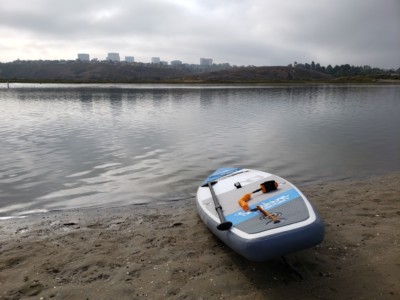
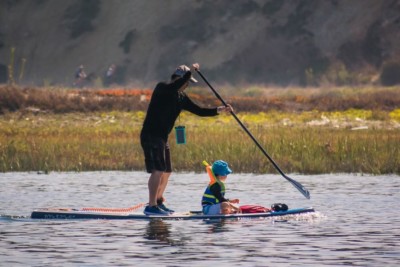
Where To Buy
- DVSport Sunshine iSUP (WH305-10)
- Check out our guide: How To Add D-Rings to Convert an iSUP into a Kayak. It is easier than you may think
- Emergency Accessories
- Whistle: Koala Windstorm | Strobe: ust See-Me 2.0 | Knife: Gerber EVO Jr.
- Accessories
- Electric iSUP Pumps
- Battery Built-In: Dr. Meter / Furein / BeWellAero (Heavy-duty and fast)
- 12V Cigarette Plug: Samengd / Vachan
- Garden Spray Hose for rinsing off
- Dolibest Tow Rope (to more easily tow another board without bungee effect)
- iSUP Safety Leash | Oceanbroad SUP/Kayak Paddle | YYST Paddle Holder Clip
- Electric iSUP Pumps
- Life Vests
- See our guide: How To Choose A Life Vest For Kayaking, Paddle Boarding
Related Posts
- Reviews: Inflatable Stand Up Paddle Board
- Freein Kids 8′ (2022): Made specifically for children and light adults
- Runwave Kohala: Less expensive, single layer iSUP board that many of my friends have recommended. It is a best-selling beginner board
- Abysup SUP123: Dual layer, lighter iSUP that is slightly more advanced than the Runwave Kohala
- Runwave Lotus Flower: Very light, dual layer iSUP with a colorful, flower-inspired art design. It is a tad more stable than the Runwave Kohala
- How-To Guides:
- Stand Up Paddle Boarding Basics & Tips: How to choose, prepare, maintain, and paddle Inflatable Boards (iSUP)
- How To Safely Paddle Board with Kids
- How To Choose A Life Vest For Kayaking, Paddle Boarding
- How To Add D-Rings to Convert an iSUP into a Kayak. It is easier than you may think

